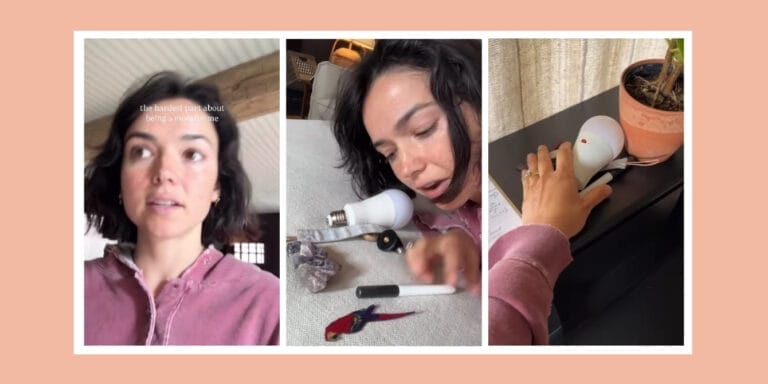Montessori at home: 10 ways to encourage math skills in young children

A big thing you can do to help your child learn to love math is to establish familiarity with numbers.
Table of Contents
Spoiler: there are no workbooks involved.
The math curriculum is many people’s favorite part of the Montessori classroom. I think this is because it is so very different from how math is taught in traditional schools.
Montessori math is very hands on, with children using concrete materials to learn mathematical concepts. While it would be difficult to recreate that curriculum at home, you can absolutely give your child real, concrete experiences with numbers…and it can even be fun!
Another big thing you can do to help your child learn to love math is to establish familiarity with numbers. Malcolm Gladwell, the author of Outliers, writes that the English language is a barrier for children learning math—our language for numbers is more complicated and less intuitive than that of many other languages, making it more difficult.
Having a certain level of familiarity with numbers helps children be more successful in the classroom. It gives them confidence and prevents what so many children believe, that they’re “not good at math”.
The best ways you can help at home are to spark an interest with real experiences and to give some level of familiarity.
Here are 10 ways to get started!
1. Grocery shop
Enlist your child to help you count out the things you need at the grocery store. For example, “We need eight potatoes, can you help me find eight?”
2. Follow a recipe
Cooking is a great way to put math to use in the real world. If your child is just beginning to play with numbers, try writing out a really simple recipe for a fruit salad. Let her help you count 20 blueberries, 15 grapes, etc.
Make sure not to correct her if she gets it wrong. You can go over the numbers with her again some other time, but this is just for fun and you don’t want to hurt her confidence. That’s why it’s good to start with a “recipe” that can’t be messed up before you move on to soufflé.
3. Let him pay
If your child is a little further along with math, let him help you pay when you run errands. Show him how to figure out which coins you need and put him in charge of a little coin purse for small purchases.
You might want to start with a low pressure situation like paying for lunch, as it will likely take him a while at first and a long line of people waiting for him to finish at the grocery store may be too much pressure.
4. Play a game
Many games children love include numbers. Try Simon Says (“Simon says jump three times”) or Hide and Seek (“Count to 50 before you look for me”).
Many board games also include counting spaces. You could even make your own board game together, writing out the numbers on the spaces and using stickers to signify the meaning of different spaces for added fun.
5. How tall are you?
Children are highly interested in growing bigger. Measure your child’s height and show her the numbers on the tape measure. Let her have a turn and help her measure the height of her favorite teddy bear. If you have a younger child, you can also just help her count how many blocks high her tower is.
6. Create a road trip game
Ask your child to count how many stop signs or how many blue cars he sees while you’re driving. Hopefully this will also keep you from counting the number of times you hear, “Are we there yet?”
7. Think out loud
We use numbers all of the time in everyday life, but it’s often automatic and done all in our head so our children have no idea.
Try to notice when you’re counting or doing a calculation in your head and say it out loud instead. Even if your child is too young to understand what you’re talking about, you’re getting him used to the language of math.
8. Read and sing about numbers
Read books with numbers, but don’t use it as a chance to quiz your kid. That will take away the fun and make her feel the pressure.
When she recognizes the numbers, she just may shout them out on her own, but otherwise just read the book and know that you’re increasing their familiarity with numbers every time you do.
There are also so many fun children’s songs that involve counting. Some of my favorites are Over in the Meadow, 5 Green and Speckled Frogs, and One Grey Elephant Balancing, but the list goes on and on.
9. Play with patterns
Pattern play is a great way to indirectly prepare children for math. You can use tangrams and take turns making patterns, or make patterns with stickers or by stringing beads.
10. I wonder how many…
Children are often fascinated by really big numbers. Even if your child doesn’t care about counting to 10, he might be interested in how many stars are in the sky. Pose a question like “I wonder how many people there are in the whole world” and then research the answer together. Really big numbers spark children’s imaginations and create a sense of wonder.
The most important thing when supporting any academic skill at home with young children is to keep it fun. If they feel too much pressure, they may shut down. Try to make numbers a part of your everyday conversation and your child will have the familiarity he needs when he learns math in school.


































